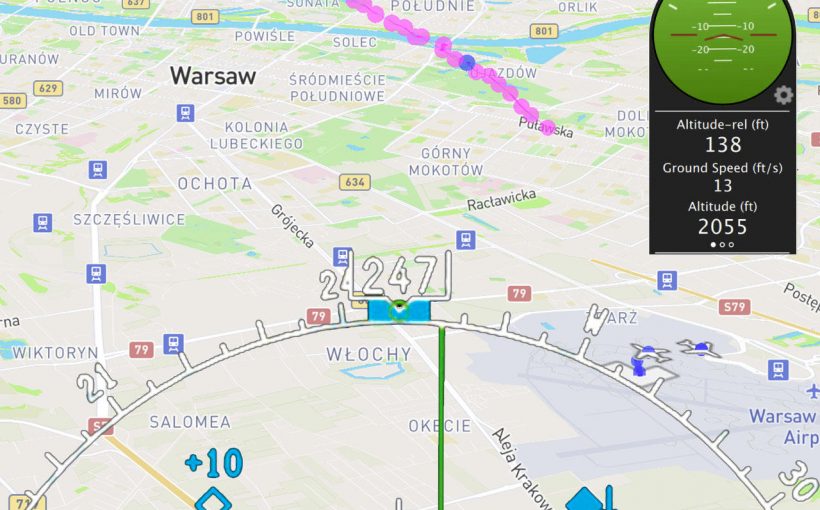On 31 January new regulations regarding beyond visual line of sight (BVLOS) flights will become effective in FIR EPWW in Poland.
According to Polish UTM company DroneRadar, which with Hawk-E is an industrial partner for PansaUTM, the UTM system managed by the air navigation service provider the Polish Air Navigation Services Agency (PANSA):
: “After an in-depth analysis, hundreds of hours of consultations, the Polish CAA decided to issue a law that allows BVLOS flights in non-segregated airspaces. Until now, BVLOS operations have been generally treated as an IFR flights, with the level of training required from drone operators equal to the IFR rating. This approach, although probably seen by many as an excessive, was undoubtedly not propelling to the drone industry, in which hundreds or even thousands of flights are to be carried out automatically. The BVLOS Regulation published on January 2019 applies to unmanned aircraft with a MTOM below 25kg. BVLOS flights are entitled to entities that have received permission from the President of the Civil Aviation Office to perform such flights.
“An aircraft permitted to fly out of sight in accordance with the new Regulation must be registered in official registry of aircraft. The condition of operation must include:
- assessment and information on the method of limiting the risk of flight operations,
- general list of control activities carried out before takeoff and after landing,
- procedures and principles of performing air operations,
- general emergency procedures,
- the procedure for providing inspection of the technical condition of unmanned aircraft
“An aircraft must be equipped with adequate lighting and navigational elements in accordance with the regulations. It must have an emergency system defined and an automatically triggered emergency procedure, recording of flight parameters and should be equipped with a camera allowing observation of the unmanned aircraft’s environment to reduce collision risk with another aircraft or obstacle.
The table illustrates the minimum planning and flight requirements.
| Operational, special or training flights | Automatic flights | |
| Minimum time required to obtain CAA BVLOS flight approval | 7 days | 7 days |
| Minimum required time to report flight intension to ANSP | 2 days
0 days in case of operational flights, if they were not possible to plan earlier |
2 days
0 days in case of operational flights, if they were not possible to plan earlier |
| Altitude / Height | up to a height not exceeding 120 m above the ground level | up to a height of 50 m above ground level or up to a height of 50 m above the highest obstacle located
within a radius of 100 m from the place of flight, |
| Horizontal distance | at a horizontal distance of less than 100 m from the building of towns, cities or settlements with the consent and conditions
city or city authorities, |
|
| Horizontal speed | at a speed of not more than 150 km/h | at a speed of not more than 150 km/h |




